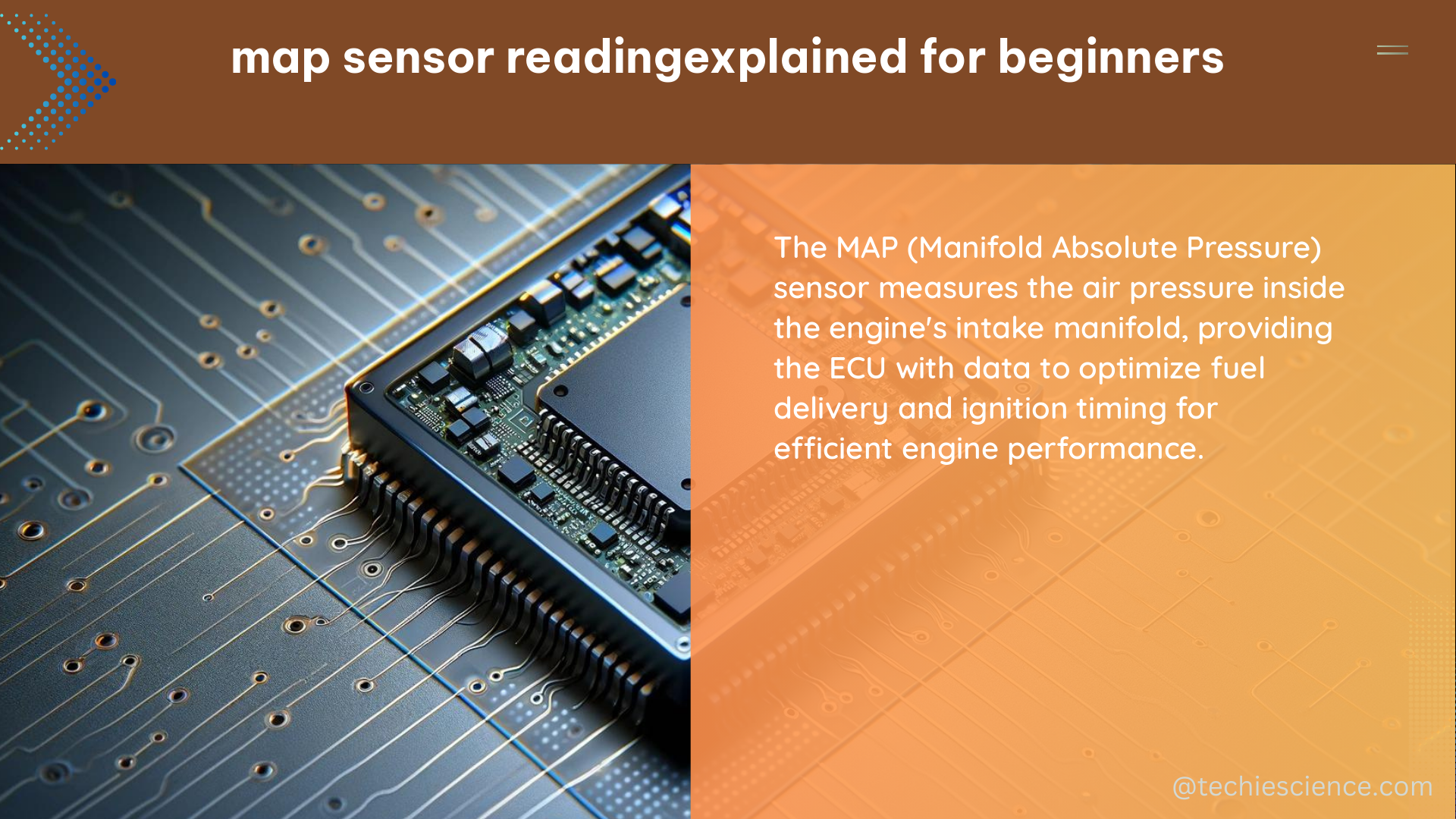A MAP sensor, or Manifold Absolute Pressure sensor, is a crucial component in modern internal combustion engines, responsible for measuring the pressure within the engine’s intake manifold. This information is vital for the engine’s electronic control unit (ECU) to determine the correct air-fuel ratio, optimize engine performance, and diagnose potential issues.
Understanding MAP Sensor Basics
The MAP sensor measures both positive pressure (boost) and negative pressure (vacuum) within the intake manifold. This pressure data is directly related to the amount of air entering the engine, which is a crucial factor in determining the appropriate fuel injection and ignition timing.
MAP sensors are typically measured in units of “bar,” a metric unit of pressure equivalent to approximately 14.5 psi. Common MAP sensor sizes include 1-bar, 2-bar, and 3-bar, each with a specific range of pressure measurement capabilities. For instance, a 2-bar MAP sensor can measure up to 29 psi, but only has a range of about 14 psi for boost before reaching its maximum capacity.
When selecting a MAP sensor, it’s essential to consider the maximum boost pressure the engine will produce, as well as the natural fluctuations in pressure that occur even in naturally aspirated engines. Choosing a sensor that is too small may result in inaccurate pressure measurements, while a sensor that is too large may not provide the necessary resolution for precise readings.
Technical Specifications of MAP Sensors

MAP sensors typically operate on a 5-volt reference circuit, with voltage readings ranging from 0 to 5 volts. At atmospheric pressure, a MAP sensor should read close to 5 volts. As vacuum is introduced into the intake manifold, the voltage reading will decrease, while positive pressure (boost) will cause the voltage reading to increase.
The relationship between voltage and pressure can be expressed as follows:
| Pressure (bar) | Voltage (V) |
|---|---|
| 0 bar | 0.5 V |
| 1 bar | 2.5 V |
| 2 bar | 4.0 V |
It’s important to note that the exact voltage-to-pressure relationship may vary depending on the specific MAP sensor model and manufacturer.
Testing and Diagnosing MAP Sensors
MAP sensors can be tested using a multimeter to measure voltage readings at different pressure levels. A vacuum pump can be used to introduce vacuum to the intake manifold, while a boost source (such as a turbocharger or supercharger) can be used to introduce positive pressure.
By comparing the voltage readings at different pressure levels to the manufacturer’s specifications, technicians can identify issues such as faulty sensors, wiring problems, or engine performance problems.
Here’s a step-by-step guide to testing a MAP sensor:
- Connect the multimeter to the MAP sensor output wire.
- With the engine off, the MAP sensor should read close to 5 volts.
- Connect the vacuum pump to the intake manifold and gradually introduce vacuum. The voltage reading should decrease as vacuum is introduced.
- Disconnect the vacuum pump and connect the boost source (if applicable). Gradually introduce boost and observe the voltage reading. The voltage reading should increase as boost is introduced.
- Compare the voltage readings at different pressure levels to the manufacturer’s specifications. If the readings are outside of the specified range, the MAP sensor may be faulty and may need to be replaced.
Conclusion
The MAP sensor is a critical component in modern engine management systems, providing the ECU with essential information about the pressure within the intake manifold. By understanding the basic principles of MAP sensor operation, technicians and DIY enthusiasts can effectively diagnose and troubleshoot issues related to engine performance, fuel efficiency, and emissions.
References:
- Understanding MAP Sensor Sizing With Ben Strader Of EFI University: https://www.enginelabs.com/news/understanding-map-sensor-sizing-with-ben-strader-of-efi-university/
- Making sense of your sensors: MAP sensor – Delphi Technologies: https://www.delphiautoparts.com/resource-center/making-sense-of-your-sensors-map-sensor
- MAP Sensor Diagnosis and Understanding Function- Pt1 – YouTube: https://www.youtube.com/watch?v=xutynSVO0xI
- Intro To MAP Sensor Data – YouTube: https://www.youtube.com/watch?v=kavHd0NBEzk
- MAP Sensor – Manifold Absolute Pressure – Explained – YouTube: https://www.youtube.com/watch?v=gq4szm5Re0g

The lambdageeks.com Core SME Team is a group of experienced subject matter experts from diverse scientific and technical fields including Physics, Chemistry, Technology,Electronics & Electrical Engineering, Automotive, Mechanical Engineering. Our team collaborates to create high-quality, well-researched articles on a wide range of science and technology topics for the lambdageeks.com website.
All Our Senior SME are having more than 7 Years of experience in the respective fields . They are either Working Industry Professionals or assocaited With different Universities. Refer Our Authors Page to get to know About our Core SMEs.